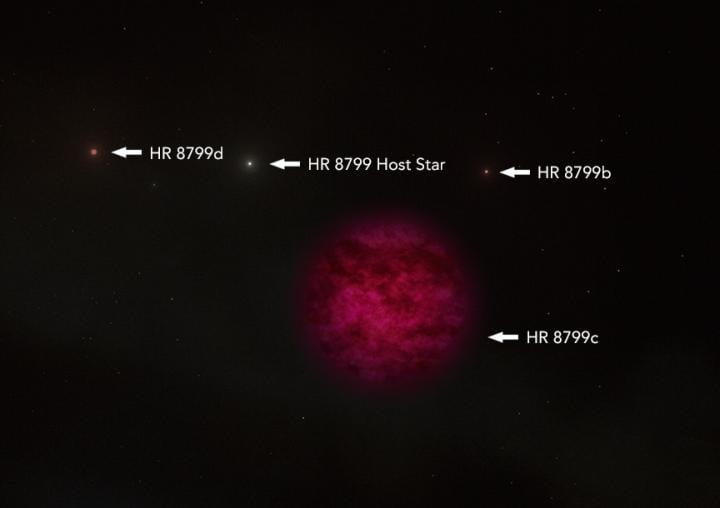Astronomers Find Water in Atmosphere of Planet in Pegasus Constellation
Astronomers from the Keck Observatory in Maunakea, Hawaii have discovered water on a nearby planet known as HR 8799 c. HR 8799 c is only 179 light-years away from Earth, making it a relatively close neighbor to us.
HR 8799 c is a large planet, being seven times more massive than Jupiter, and it orbits around its star every 200 years. The planet was first discovered back in 2008 when astronomers were investigating the star around which it orbits, HR 8799. As well as HR 8799 c, there are other planets orbiting the star too, named HR 8799 b, d, and e. The HR 8799 star is in the Pegasus constellation and is over 30 millions years old, and is a main-sequence star with the unusual property of lacking metals in its upper atmosphere.

The discovery of water in the atmosphere of HR 8799 c was made using two special telescope technologies from the Keck Observatory. Firstly, adaptive optics is a method of reducing the blur of images caused by the Earth’s atmosphere, so that telescopes can look further out into space with greater accuracy. Secondly, a spectrometer called the Near-Infrared Cryogenic Echelle Spectrograph (NIRSPEC) uses infrared light to work out what chemicals are in a planet’s atmosphere by seeing how light is broken apart within the atmosphere.
One reason that finding water on a planet is such big news is that it means that the planet could potentially support life. Most planets are either much too cold or much too hot for water to be in liquid form on their surface, because they are too near or too far from the star that they orbit to be the right temperature. So astronomers search for planets in the “Goldilocks Zone” which is neither too far from, nor too close to, the star and is just right for liquid water to form on the planet’s surface.
The aim of the Keck Observatory is to identify chemicals in the atmospheres of planets that are in their star’s Goldilocks Zone, and which show biosignatures that could indicate the presence of life, like water, oxygen, and methane. After their success with identifying HR 8799 c, the research team intends to look for more such planets using the planned Thirty Meter Telescope which should be completed by 2020.
The findings are published in The Astronomical Journal.




